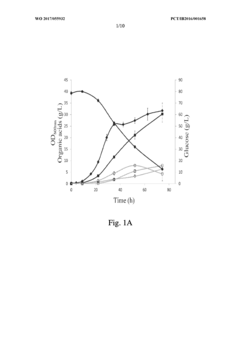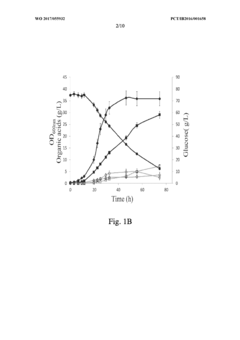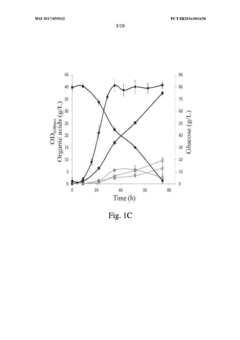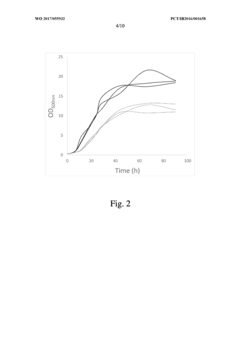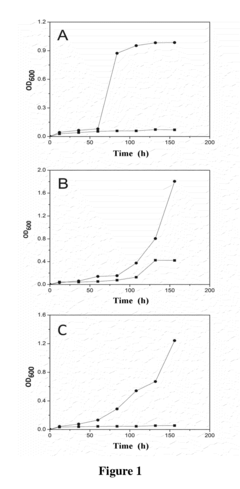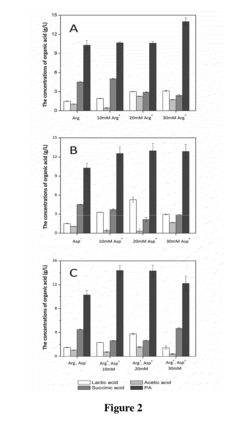Propionic Acid: Bridging Food Innovation and Sustainable Practices
JUL 3, 20259 MIN READ
Generate Your Research Report Instantly with AI Agent
Patsnap Eureka helps you evaluate technical feasibility & market potential.
Propionic Acid Evolution
Propionic acid has undergone a significant evolution since its discovery in the mid-19th century. Initially identified as a byproduct of bacterial fermentation, it was primarily considered a nuisance in dairy production. However, as scientific understanding advanced, the potential applications of propionic acid began to emerge, marking the beginning of its journey from waste product to valuable commodity.
In the early 20th century, researchers started to explore the antimicrobial properties of propionic acid. This led to its first commercial applications in food preservation, particularly in baked goods. The ability to inhibit mold growth without affecting taste or texture made propionic acid an invaluable tool in extending shelf life and reducing food waste.
The mid-20th century saw a surge in industrial production methods for propionic acid. The development of more efficient fermentation processes and synthetic routes using petrochemical feedstocks significantly increased production capacity. This expansion in supply opened up new avenues for application, extending beyond food preservation into animal feed additives and various industrial uses.
The late 20th century marked a pivotal point in propionic acid's evolution. Growing environmental concerns and the push for sustainable practices led to renewed interest in bio-based production methods. Researchers began exploring ways to optimize bacterial fermentation, seeking to create more environmentally friendly and cost-effective production processes.
In recent decades, the evolution of propionic acid has been characterized by a focus on sustainability and versatility. Advanced biotechnology techniques have enabled the development of genetically modified microorganisms capable of producing propionic acid more efficiently from renewable resources. This shift towards bio-based production aligns with global efforts to reduce dependence on fossil fuels and minimize carbon footprints.
Concurrently, new applications for propionic acid have continued to emerge. Its role in the production of cellulose-based plastics, pharmaceuticals, and herbicides has expanded its market reach. The food industry has also found innovative uses, incorporating propionic acid into functional foods and nutraceuticals due to its potential health benefits.
Looking ahead, the evolution of propionic acid is poised to continue, driven by advancements in biotechnology, increasing demand for sustainable solutions, and ongoing research into its diverse applications. As industries strive to bridge food innovation with sustainable practices, propionic acid stands at the forefront, exemplifying the potential for traditional chemicals to adapt and thrive in a changing world.
In the early 20th century, researchers started to explore the antimicrobial properties of propionic acid. This led to its first commercial applications in food preservation, particularly in baked goods. The ability to inhibit mold growth without affecting taste or texture made propionic acid an invaluable tool in extending shelf life and reducing food waste.
The mid-20th century saw a surge in industrial production methods for propionic acid. The development of more efficient fermentation processes and synthetic routes using petrochemical feedstocks significantly increased production capacity. This expansion in supply opened up new avenues for application, extending beyond food preservation into animal feed additives and various industrial uses.
The late 20th century marked a pivotal point in propionic acid's evolution. Growing environmental concerns and the push for sustainable practices led to renewed interest in bio-based production methods. Researchers began exploring ways to optimize bacterial fermentation, seeking to create more environmentally friendly and cost-effective production processes.
In recent decades, the evolution of propionic acid has been characterized by a focus on sustainability and versatility. Advanced biotechnology techniques have enabled the development of genetically modified microorganisms capable of producing propionic acid more efficiently from renewable resources. This shift towards bio-based production aligns with global efforts to reduce dependence on fossil fuels and minimize carbon footprints.
Concurrently, new applications for propionic acid have continued to emerge. Its role in the production of cellulose-based plastics, pharmaceuticals, and herbicides has expanded its market reach. The food industry has also found innovative uses, incorporating propionic acid into functional foods and nutraceuticals due to its potential health benefits.
Looking ahead, the evolution of propionic acid is poised to continue, driven by advancements in biotechnology, increasing demand for sustainable solutions, and ongoing research into its diverse applications. As industries strive to bridge food innovation with sustainable practices, propionic acid stands at the forefront, exemplifying the potential for traditional chemicals to adapt and thrive in a changing world.
Market Demand Analysis
The market demand for propionic acid has been steadily growing, driven by its versatile applications in food preservation, animal feed, and various industrial processes. In the food industry, propionic acid serves as a crucial preservative, extending the shelf life of baked goods, dairy products, and processed foods. This application has gained significant traction as consumers increasingly demand natural and clean-label food products.
The global propionic acid market is experiencing robust growth, with a compound annual growth rate (CAGR) projected to remain strong in the coming years. This growth is primarily attributed to the expanding food and beverage industry, particularly in developing economies where urbanization and changing dietary habits are driving demand for processed and packaged foods.
In the animal feed sector, propionic acid is widely used as a mold inhibitor and feed preservative. The increasing focus on animal nutrition and the growing livestock industry worldwide are contributing to the rising demand for propionic acid in this segment. Additionally, stringent regulations regarding food safety and the need for effective preservation methods are further boosting market growth.
The pharmaceutical industry is another key driver of propionic acid demand. Its use in the production of cellulose acetate propionate, a material used in pharmaceutical coatings and controlled-release drug delivery systems, is expanding. This trend is expected to continue as the pharmaceutical sector invests in innovative drug delivery technologies.
Sustainability concerns are also shaping the market landscape for propionic acid. There is a growing interest in bio-based propionic acid, derived from renewable resources, as industries seek to reduce their carbon footprint and align with circular economy principles. This shift towards sustainable production methods is likely to open new market opportunities and drive innovation in the sector.
Geographically, Asia-Pacific is emerging as a key growth region for propionic acid, fueled by rapid industrialization, increasing disposable incomes, and changing consumer preferences. North America and Europe continue to be significant markets, with established food and pharmaceutical industries driving demand.
Despite the positive outlook, the propionic acid market faces challenges such as price volatility of raw materials and competition from alternative preservatives. However, ongoing research and development efforts aimed at improving production efficiency and exploring new applications are expected to mitigate these challenges and sustain market growth.
The global propionic acid market is experiencing robust growth, with a compound annual growth rate (CAGR) projected to remain strong in the coming years. This growth is primarily attributed to the expanding food and beverage industry, particularly in developing economies where urbanization and changing dietary habits are driving demand for processed and packaged foods.
In the animal feed sector, propionic acid is widely used as a mold inhibitor and feed preservative. The increasing focus on animal nutrition and the growing livestock industry worldwide are contributing to the rising demand for propionic acid in this segment. Additionally, stringent regulations regarding food safety and the need for effective preservation methods are further boosting market growth.
The pharmaceutical industry is another key driver of propionic acid demand. Its use in the production of cellulose acetate propionate, a material used in pharmaceutical coatings and controlled-release drug delivery systems, is expanding. This trend is expected to continue as the pharmaceutical sector invests in innovative drug delivery technologies.
Sustainability concerns are also shaping the market landscape for propionic acid. There is a growing interest in bio-based propionic acid, derived from renewable resources, as industries seek to reduce their carbon footprint and align with circular economy principles. This shift towards sustainable production methods is likely to open new market opportunities and drive innovation in the sector.
Geographically, Asia-Pacific is emerging as a key growth region for propionic acid, fueled by rapid industrialization, increasing disposable incomes, and changing consumer preferences. North America and Europe continue to be significant markets, with established food and pharmaceutical industries driving demand.
Despite the positive outlook, the propionic acid market faces challenges such as price volatility of raw materials and competition from alternative preservatives. However, ongoing research and development efforts aimed at improving production efficiency and exploring new applications are expected to mitigate these challenges and sustain market growth.
Technical Challenges
The development of propionic acid as a sustainable food preservative faces several technical challenges that require innovative solutions. One of the primary obstacles is the optimization of production processes to enhance efficiency and reduce costs. Current fermentation methods often yield low concentrations of propionic acid, necessitating extensive downstream processing, which increases production expenses and energy consumption.
Another significant challenge lies in the purification of propionic acid. Traditional separation techniques, such as distillation, are energy-intensive and can lead to product degradation due to high temperatures. Developing more efficient and environmentally friendly separation methods, such as membrane-based technologies or advanced extraction techniques, is crucial for improving the overall sustainability of propionic acid production.
The stability and efficacy of propionic acid in various food matrices present additional technical hurdles. Different food products have diverse pH levels, water activities, and ingredient compositions, which can affect the antimicrobial performance of propionic acid. Formulating stable and effective propionic acid-based preservatives that maintain their functionality across a wide range of food applications remains a challenge for researchers and food technologists.
Furthermore, the potential for off-flavors and odors associated with propionic acid usage in food products poses a sensory challenge. Developing strategies to mask or mitigate these sensory impacts without compromising the preservative efficacy of propionic acid is essential for its widespread adoption in the food industry.
The regulatory landscape surrounding food additives and preservatives also presents a technical challenge for propionic acid implementation. Ensuring compliance with varying international regulations and obtaining necessary approvals for novel propionic acid-based formulations can be a complex and time-consuming process, requiring extensive safety and efficacy data.
Addressing the environmental impact of propionic acid production is another critical technical challenge. Current production methods often rely on petrochemical feedstocks, which are not sustainable in the long term. Developing bio-based production routes using renewable resources and implementing green chemistry principles in the synthesis process are essential for aligning propionic acid production with sustainable practices.
Lastly, the scalability of propionic acid production to meet growing global demand while maintaining consistent quality and purity is a significant technical hurdle. Designing robust and scalable production processes that can accommodate increased volumes without compromising product quality or environmental sustainability requires innovative engineering solutions and process optimization strategies.
Another significant challenge lies in the purification of propionic acid. Traditional separation techniques, such as distillation, are energy-intensive and can lead to product degradation due to high temperatures. Developing more efficient and environmentally friendly separation methods, such as membrane-based technologies or advanced extraction techniques, is crucial for improving the overall sustainability of propionic acid production.
The stability and efficacy of propionic acid in various food matrices present additional technical hurdles. Different food products have diverse pH levels, water activities, and ingredient compositions, which can affect the antimicrobial performance of propionic acid. Formulating stable and effective propionic acid-based preservatives that maintain their functionality across a wide range of food applications remains a challenge for researchers and food technologists.
Furthermore, the potential for off-flavors and odors associated with propionic acid usage in food products poses a sensory challenge. Developing strategies to mask or mitigate these sensory impacts without compromising the preservative efficacy of propionic acid is essential for its widespread adoption in the food industry.
The regulatory landscape surrounding food additives and preservatives also presents a technical challenge for propionic acid implementation. Ensuring compliance with varying international regulations and obtaining necessary approvals for novel propionic acid-based formulations can be a complex and time-consuming process, requiring extensive safety and efficacy data.
Addressing the environmental impact of propionic acid production is another critical technical challenge. Current production methods often rely on petrochemical feedstocks, which are not sustainable in the long term. Developing bio-based production routes using renewable resources and implementing green chemistry principles in the synthesis process are essential for aligning propionic acid production with sustainable practices.
Lastly, the scalability of propionic acid production to meet growing global demand while maintaining consistent quality and purity is a significant technical hurdle. Designing robust and scalable production processes that can accommodate increased volumes without compromising product quality or environmental sustainability requires innovative engineering solutions and process optimization strategies.
Current Applications
01 Production methods of propionic acid
Various methods are employed to produce propionic acid, including fermentation processes, chemical synthesis, and catalytic reactions. These methods often involve the use of specific microorganisms, catalysts, or chemical precursors to efficiently generate propionic acid for industrial applications.- Production methods of propionic acid: Various methods for producing propionic acid are described, including fermentation processes, chemical synthesis, and catalytic reactions. These methods aim to improve yield, efficiency, and purity of propionic acid production for industrial applications.
- Applications of propionic acid in food preservation: Propionic acid and its salts are widely used as food preservatives due to their antimicrobial properties. They are effective in preventing mold growth and extending the shelf life of various food products, particularly in bakery items and dairy products.
- Use of propionic acid in pharmaceutical formulations: Propionic acid and its derivatives are utilized in pharmaceutical compositions for various therapeutic applications. They may be incorporated into drug formulations to enhance stability, solubility, or bioavailability of active ingredients.
- Propionic acid in polymer and material science: Propionic acid plays a role in polymer chemistry and material science applications. It can be used as a precursor or modifier in the synthesis of various polymers and materials, contributing to their properties and performance.
- Environmental and agricultural applications of propionic acid: Propionic acid finds applications in environmental and agricultural sectors. It can be used in waste treatment processes, as a soil amendment, or as a component in herbicides and pesticides, contributing to sustainable agricultural practices.
02 Applications of propionic acid in food preservation
Propionic acid is widely used as a food preservative due to its antimicrobial properties. It is effective in inhibiting the growth of mold and certain bacteria, making it valuable in extending the shelf life of various food products, particularly baked goods and dairy items.Expand Specific Solutions03 Use of propionic acid in pharmaceutical formulations
Propionic acid and its derivatives find applications in the pharmaceutical industry. They are used in the formulation of various medications, including topical treatments and oral drugs. The acid's properties contribute to drug stability, solubility, and efficacy in certain pharmaceutical preparations.Expand Specific Solutions04 Industrial applications of propionic acid
Propionic acid has diverse industrial applications beyond food and pharmaceuticals. It is used in the production of plastics, herbicides, and as a chemical intermediate in various manufacturing processes. The acid's versatility makes it valuable in multiple industrial sectors.Expand Specific Solutions05 Environmental and safety considerations in propionic acid handling
The handling and use of propionic acid require specific safety measures due to its corrosive nature and potential environmental impact. Proper storage, transportation, and disposal methods are essential to ensure worker safety and minimize environmental risks associated with its use in various industries.Expand Specific Solutions
Industry Leaders
The propionic acid market is in a growth phase, driven by increasing demand in food preservation and sustainable practices. The global market size is projected to expand significantly, fueled by applications in food, feed, and pharmaceuticals. Technologically, the field is advancing rapidly, with key players like BASF, Dow, and Arkema leading innovation. Universities such as Ohio State and Jiangnan are contributing to research advancements. Emerging companies like Kemin Industries and Shenzhen Agrecoe are introducing novel applications, while established firms like Frito-Lay and Danone are integrating propionic acid into their product lines. The industry is seeing a shift towards bio-based production methods, with companies like Corbion (formerly Purac Biochem) at the forefront of sustainable manufacturing processes.
Kemin Industries, Inc.
Technical Solution: Kemin Industries has focused on developing propionic acid-based solutions for food preservation and animal nutrition. Their research has led to the creation of buffered propionic acid products that offer improved handling and efficacy in various applications[13]. Kemin has also invested in encapsulation technologies to enhance the controlled release of propionic acid in feed applications, improving its effectiveness and reducing overall usage[14]. The company's approach combines propionic acid with other organic acids and natural extracts to create synergistic preservation systems that address both microbial control and oxidation in food products[15].
Strengths: Specialized formulations for specific applications, focus on synergistic preservation systems, and expertise in encapsulation technologies. Weaknesses: Reliance on external propionic acid supply and potential limitations in addressing the broader propionic acid market beyond specialized applications.
Purac Biochem BV
Technical Solution: Purac Biochem, now part of Corbion, has pioneered the development of lactic acid-based solutions that can be used in conjunction with or as alternatives to propionic acid in food preservation. Their approach involves using proprietary fermentation technology to produce natural antimicrobial compounds that can extend shelf life and improve food safety[7]. The company has also invested in research to enhance the synergistic effects of lactic acid and propionic acid combinations, offering tailored solutions for various food applications[8]. Purac's focus on clean label and natural preservation aligns with consumer trends towards healthier and more sustainable food products[9].
Strengths: Expertise in natural preservation solutions, synergistic product offerings, and alignment with clean label trends. Weaknesses: Indirect competition in the propionic acid market and potential limitations in applications where propionic acid is specifically required.
Key Patents and Research
Improved propionibacterium strains for the production of propionic acid
PatentWO2017055932A2
Innovation
- Genome shuffling between selected Propionibacterium strains, such as P. acidipropionici ATCC 4875 and P. acidipropionici ATCC 55737, to generate novel strains with enhanced growth rates and propionic acid production, utilizing genetic material exchange to create strains with improved metabolic pathways and regulatory mechanisms.
Method for Improving Acid tolerance of Propionibacterium acdipropionici
PatentInactiveUS20140178952A1
Innovation
- Adding arginine and/or aspartic acid to the culture medium during the cultivation of Propionibacterium acdipropionici to enhance acid tolerance and propionic acid productivity.
Regulatory Framework
The regulatory framework surrounding propionic acid plays a crucial role in its application within the food industry and sustainable practices. As a widely used food preservative and additive, propionic acid is subject to stringent regulations and guidelines set by various international and national authorities.
In the United States, the Food and Drug Administration (FDA) regulates the use of propionic acid in food products. It is classified as Generally Recognized as Safe (GRAS) when used in accordance with good manufacturing practices. The FDA has established specific limits for its use in different food categories, ensuring consumer safety while allowing for its beneficial applications.
The European Union, through the European Food Safety Authority (EFSA), has also approved propionic acid as a food additive. It is listed under the E-number E280 and is permitted for use in various food products, including baked goods, processed cheeses, and certain beverages. The EU has set maximum levels for its use and requires proper labeling on food products containing propionic acid.
Globally, the Codex Alimentarius Commission, established by the Food and Agriculture Organization (FAO) and the World Health Organization (WHO), provides international food standards that many countries use as a reference. These standards include guidelines for the use of propionic acid in food preservation and as a processing aid.
In the context of sustainable practices, regulatory bodies are increasingly focusing on the environmental impact of food additives. While propionic acid is generally considered environmentally friendly due to its biodegradability, regulations are evolving to address its production methods and potential ecological effects.
Many countries have implemented regulations requiring manufacturers to assess and disclose the environmental impact of their production processes. This includes evaluating the carbon footprint, water usage, and waste management associated with propionic acid production. Such regulations aim to promote more sustainable manufacturing practices and encourage the development of eco-friendly alternatives.
As the food industry continues to innovate, regulatory frameworks are adapting to address new applications of propionic acid. This includes its use in novel food preservation techniques, packaging materials, and as a precursor in the production of other sustainable chemicals. Regulatory bodies are working to balance the benefits of these innovations with potential risks, ensuring that new applications meet safety and environmental standards.
The regulatory landscape for propionic acid is dynamic, with ongoing research and technological advancements influencing policy decisions. As sustainability becomes an increasingly important factor in food production and preservation, it is likely that future regulations will place greater emphasis on the environmental aspects of propionic acid use, potentially driving further innovations in its production and application.
In the United States, the Food and Drug Administration (FDA) regulates the use of propionic acid in food products. It is classified as Generally Recognized as Safe (GRAS) when used in accordance with good manufacturing practices. The FDA has established specific limits for its use in different food categories, ensuring consumer safety while allowing for its beneficial applications.
The European Union, through the European Food Safety Authority (EFSA), has also approved propionic acid as a food additive. It is listed under the E-number E280 and is permitted for use in various food products, including baked goods, processed cheeses, and certain beverages. The EU has set maximum levels for its use and requires proper labeling on food products containing propionic acid.
Globally, the Codex Alimentarius Commission, established by the Food and Agriculture Organization (FAO) and the World Health Organization (WHO), provides international food standards that many countries use as a reference. These standards include guidelines for the use of propionic acid in food preservation and as a processing aid.
In the context of sustainable practices, regulatory bodies are increasingly focusing on the environmental impact of food additives. While propionic acid is generally considered environmentally friendly due to its biodegradability, regulations are evolving to address its production methods and potential ecological effects.
Many countries have implemented regulations requiring manufacturers to assess and disclose the environmental impact of their production processes. This includes evaluating the carbon footprint, water usage, and waste management associated with propionic acid production. Such regulations aim to promote more sustainable manufacturing practices and encourage the development of eco-friendly alternatives.
As the food industry continues to innovate, regulatory frameworks are adapting to address new applications of propionic acid. This includes its use in novel food preservation techniques, packaging materials, and as a precursor in the production of other sustainable chemicals. Regulatory bodies are working to balance the benefits of these innovations with potential risks, ensuring that new applications meet safety and environmental standards.
The regulatory landscape for propionic acid is dynamic, with ongoing research and technological advancements influencing policy decisions. As sustainability becomes an increasingly important factor in food production and preservation, it is likely that future regulations will place greater emphasis on the environmental aspects of propionic acid use, potentially driving further innovations in its production and application.
Environmental Impact
Propionic acid production and usage have significant environmental implications that warrant careful consideration. The traditional petrochemical-based production of propionic acid contributes to greenhouse gas emissions and relies on non-renewable resources. However, recent advancements in bio-based production methods offer more sustainable alternatives.
Fermentation processes using renewable feedstocks such as glucose or glycerol have shown promise in reducing the carbon footprint of propionic acid production. These bio-based methods can potentially decrease greenhouse gas emissions by up to 50% compared to conventional petrochemical routes. Additionally, the use of agricultural waste or by-products as feedstock further enhances the sustainability profile of propionic acid production.
In food preservation applications, propionic acid plays a crucial role in extending shelf life and reducing food waste. By inhibiting mold growth and bacterial proliferation, it helps minimize the environmental impact associated with food spoilage and disposal. This aligns with global efforts to reduce food waste, which is responsible for approximately 8% of global greenhouse gas emissions.
The use of propionic acid in animal feed as a preservative and mold inhibitor also contributes to environmental sustainability. By improving feed efficiency and reducing the need for antibiotics in livestock, it indirectly helps lower the environmental footprint of animal agriculture. This is particularly significant given the substantial contribution of livestock to global greenhouse gas emissions.
However, the environmental benefits of propionic acid must be balanced against potential risks. Improper handling or disposal can lead to soil and water contamination. Therefore, stringent safety measures and proper waste management protocols are essential to mitigate these risks and ensure the overall positive environmental impact of propionic acid use.
In the context of sustainable practices, propionic acid's role in developing bio-based plastics and polymers is noteworthy. These materials offer biodegradable alternatives to conventional plastics, potentially reducing plastic pollution and its associated environmental harm. The development of such eco-friendly materials aligns with circular economy principles and supports the transition towards more sustainable product lifecycles.
As industries increasingly prioritize sustainability, the demand for environmentally friendly production methods and applications of propionic acid is likely to grow. This trend may drive further innovations in green chemistry and bioengineering, potentially leading to even more sustainable production processes and novel applications that contribute to environmental conservation efforts.
Fermentation processes using renewable feedstocks such as glucose or glycerol have shown promise in reducing the carbon footprint of propionic acid production. These bio-based methods can potentially decrease greenhouse gas emissions by up to 50% compared to conventional petrochemical routes. Additionally, the use of agricultural waste or by-products as feedstock further enhances the sustainability profile of propionic acid production.
In food preservation applications, propionic acid plays a crucial role in extending shelf life and reducing food waste. By inhibiting mold growth and bacterial proliferation, it helps minimize the environmental impact associated with food spoilage and disposal. This aligns with global efforts to reduce food waste, which is responsible for approximately 8% of global greenhouse gas emissions.
The use of propionic acid in animal feed as a preservative and mold inhibitor also contributes to environmental sustainability. By improving feed efficiency and reducing the need for antibiotics in livestock, it indirectly helps lower the environmental footprint of animal agriculture. This is particularly significant given the substantial contribution of livestock to global greenhouse gas emissions.
However, the environmental benefits of propionic acid must be balanced against potential risks. Improper handling or disposal can lead to soil and water contamination. Therefore, stringent safety measures and proper waste management protocols are essential to mitigate these risks and ensure the overall positive environmental impact of propionic acid use.
In the context of sustainable practices, propionic acid's role in developing bio-based plastics and polymers is noteworthy. These materials offer biodegradable alternatives to conventional plastics, potentially reducing plastic pollution and its associated environmental harm. The development of such eco-friendly materials aligns with circular economy principles and supports the transition towards more sustainable product lifecycles.
As industries increasingly prioritize sustainability, the demand for environmentally friendly production methods and applications of propionic acid is likely to grow. This trend may drive further innovations in green chemistry and bioengineering, potentially leading to even more sustainable production processes and novel applications that contribute to environmental conservation efforts.
Unlock deeper insights with Patsnap Eureka Quick Research — get a full tech report to explore trends and direct your research. Try now!
Generate Your Research Report Instantly with AI Agent
Supercharge your innovation with Patsnap Eureka AI Agent Platform!
